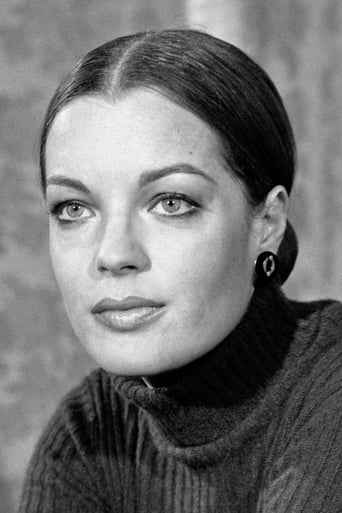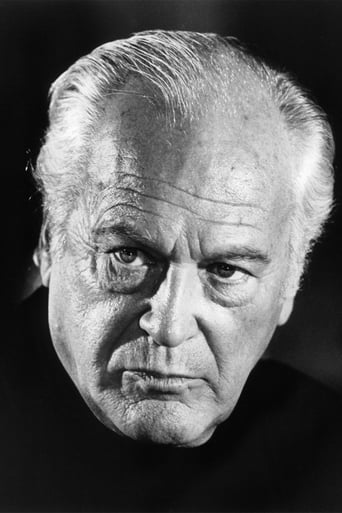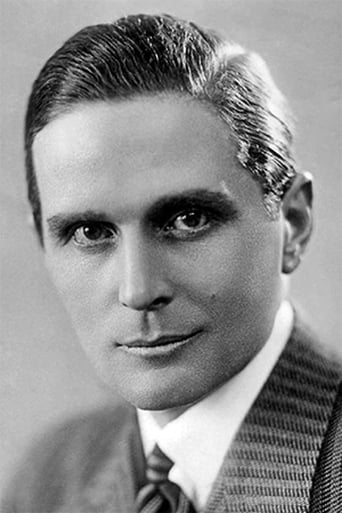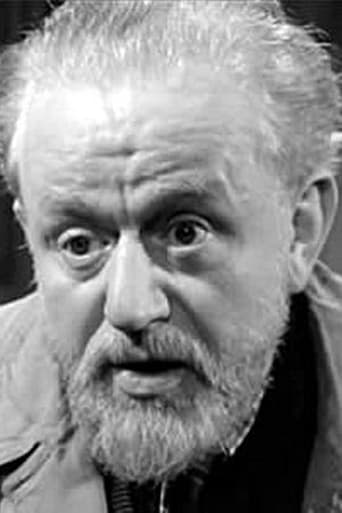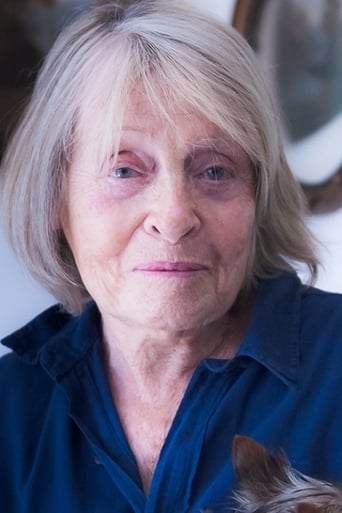CrawlerChunky
In truth, there is barely enough story here to make a film.
Verity Robins
Great movie. Not sure what people expected but I found it highly entertaining.
Gary
The movie's not perfect, but it sticks the landing of its message. It was engaging - thrilling at times - and I personally thought it was a great time.
Fleur
Actress is magnificent and exudes a hypnotic screen presence in this affecting drama.
leplatypus
After Marilyn, Natalie Portman, Jennifer Connelly, Carrie Fisher, it was her turn : I picked up this one to learn my classics and to see a young Romy. At only 21 but after the Sissy movies, she shows already a great talent, especially by managing to be sometimes tragically desperate and other times playful. It would be interesting to check the age gap with her old lover, just to see if this precious, royal love is similar to other shocking ones (Lolita for example !). However, what i remember from the movie is that this Tsar was a sort of Lincoln and JFK in this old Russia : liberal, he wanted freedom and power for his people. For sure, his establishment was upset of his reforms so like a later company, a rebellious fringe inside the government helps the true rebels (terrorists) to get access and perform the assassination. It's the 1st time i heard this story of this brave and courageous state-man but it's not a surprise as for decades, we live under the Paxamericana law and everything outside is not considered as valuable ! Check the year of this production as there is indeed no new movies about him since 1959 !
Marcin Kukuczka
After Romy Schneider's definite answer "NO" at the attempts to cast her in the fourth part of SISSI, she did not entirely get rid of portraying a monarch on the screen. In fact, as a young actress with the European career ahead of her (the late 1950s), she could embody these characters with the similar grace like the greatest Hollywood stars of the time. And so KATIA, a remake of the 1938 movie by Maurice Tourneur the action of which is set in Russia during the reign of tsar Alexander II, boasts of her magnetic presence. But its link with SISSI appears to be more biographical than actual. The effect Romy creates in KATIA owes much to the experience of hers under Marischka (not only SISSI but also MAEDCHENJAHRE EINER KOENIGIN). In that case, it seems quite justified what Film Dienst said about KATIA: "Sissi with Russian names." Some scenes are so similar to the latter that one could even go further and refer to the style herein as the one on the verge of directorial plagiarism. Yet, after analyzing some details of the movie and its background, this opinion appears to be quite simplified and generalized. There is one thing that strikes mostly the conservative fans of Kaiserin Elizabeth - while SISSI was a model of morality on the screen, KATIA is a far more daring movie, which prepares, in this way, a ground for more controversial movies. The film's content is affected by EXPLOSIONS! Thanks to many people and their encounters but, first, let me outline some data about the director of this movie.Robert Siodmak had already gained experience in Hollywood making some of the most intriguing film noirs of the time. One of such great, effective experiments with the genre appears to be PHANTOM LADY (1944) with the staff producer Joan Harrison, Alfred Hitchcock's former secretary and script assistant. After coming back from the USA, such European stuff as in KATIA's storyline was surely new to Mr Siodmak. Nevertheless, in this typical romance of the time that includes misalliance and typical charm for the stuff, he handles some of the skillfully 'manipulated' images exceptionally well. While in thriller we are occupied by the question: "Where is a murderer?," in KATIA we are occupied by "Where is the tsar?"The revolutionary ideas and attempts that are incorporated into the storyline, though may seem boring and exaggerated at certain moments (bombing is artificially depicted), serve a very useful purpose to depict the twofold reality that influenced the imperial court of the time. Though not very thrilling, the details that we pay attention to are a real product of the film noir experience of the director. This focus on details is resembled at the Institute of Smolny sequence and the little portrait of the tsar that Katia holds in her hand. Moreover, the camera highlights the face expression of a dying man rather than calling our attention at shooting itself. In the conspiracy sequence, the objects of bread and bottle mark the plot's undertone memorably. Some scenes are built upon mere hints not exposing the entire image of a situation.Naturally, the film is a royal costume drama and therefore, it offers a lot of splendid garments in scenes of exceptional charm. Just to name the great ball that tsar opens with Katia and the young girl from Smolny Institute claims not to dance with anyone else from then on. It may be called a 'Russian epic' thanks to its typical combination of love and reign, of tradition and reform, of striking heart and national duty. The splendor of the Orthodox Church is nicely depicted in the scene of tsarina Maria Alexandrovna's funeral. But that would be all quite little if it were not for the people we actually see this film today: Romy Schneider and Curd Juergens. Here lies another explosion...the one of talents.Their age discrepancy (a generation) works well on the screen and accurately stresses the 'forbidden love' that was bound, like most of the Hollywood romances, to lose. Their chemistry is clear and not at all enforced. Romy Schneider, in fact, portrays a character that grows in age and in experience ('kidnapped' from the narrow minded institute to the court) while Curd Juergens portrays a ruler whose heart changes. Their scenes are romantic (sleigh ride) and daring (in one scene they lie in bed - still something uncommon in 1959). Among many of the skillful methods of acting, consider their eye contact, where camera does an additionally effective job. The supporting cast, including Pierre Blanchar as Koubaroff and Monique Melinand as Tsarina remain in the shadow of the two. KATIA is truly a Romy Schneider and Curd Juergens' film. Such a unique pair and isn't that an irony of fate that they both died within one month?All in all, no great work of cinematic production but an interesting little film where Romy's talent actually bursts out in the role more free to interpret than Sissi and not yet so daring as her later roles of possibilities in their fullness.
MARIO GAUCI
Following his 11-year tenure in Hollywood between 1941 and 1952, expatriate German director Siodmak decided to return to Europe; he would subsequently contrive to make three more English-language films, even if they weren’t up to his best work in the States – but, then, neither was the ‘foreign’ stuff.This costumer (a remake of a 1938 film by Maurice Tourneur) is a German/French co-production: it’s a good-looking if stilted melodrama involving impossible love in the Russian court of Alexander II (Curd Jurgens); with an ailing wife, he draws his amorous attention to a proud teenage beauty (Romy Schneider). Their romance, however, is likely to throw the already troubled Czarist rule (by the activities of a group of terrorists seeking more humane laws) into turmoil; he himself mistrusts his ministers, but they in their turn are willing to collaborate with the ‘enemy’ in order to put a stop to Jurgens and Schneider’s love – which is giving the Empire a bad name thus threatening their own position! In fact, during the course of the film, we are witness to no fewer than four attempts on the Czar’s life – which is a bit much, if you ask me; nevertheless, it’s in scenes like these where we get a glimpse of the old Siodmak (he was one of the finest exponents of Film Noir): the film’s most creative bit of direction is Siodmak’s decision to refrain from showing a duel but rather concentrate on the snow-covered trees nearby and only cutting to the bloodied body (Katia’s officer brother who was defending her honor!) once the shots are heard on the soundtrack. The revolutionaries themselves – led by future Claude Chabrol regular Michel Bouquet – are typically depicted as desperate men (and women) rather than villainous (a fate reserved for the Ministers, though they’re actually more pitiful and misguided in their own self-importance than truly evil); the ultimate irony is that Jurgens had always been sympathetic to the terrorists’ cause, but the burden of tradition and a whole set of events (such as the release of the rebels’ imprisoned friends, promised them by the Emperor via Katia, seen as an act of betrayal when the Ministers arrange for the ex-convicts to be gunned down soon after) eventually seal his fate…just as, with the Empress dead, Schneider was about to take her place on the throne by his side! For the record, the impossibly young Schneider had actually risen to stardom with a similar Ruritanian i.e. quasi fairy-tale role – that of Princess Sissi in a series of three Austrian films made between 1955 and 1957; as for Jurgens, I have his second of two Michel Strogoff films (made in 1956 and 1961) recorded, as was this one, off Italian TV awaiting its turn to be watched. Finally, given KATIA’s silly U.S. retitling, one shouldn’t confuse it with an earlier Siodmak picture from his Hollywood days – THE GREAT SINNER (1949) which, incidentally, was also a period piece about Russians (adapted, as a matter of fact, from Fyodor Dostoyevsky’s “The Gambler”).
mariedup
Who can go through this movie without being charmed by the character of Katia (Romy Schneider)? From her teenage days in a school for poor noble young ladies to her near accession to the throne of Russia, she showed utter and complete love and devotion for the Tsar Alexander II.
What is particularly well depicted in this movie is the waiting. Katia and Alexander spend hours, days, years sometimes, waiting to see each other again. And each second of waiting renders their love stronger. The whole movie is based on some kind of patience/impatience duality. Alexander begs Katia to be patient but the terrorists feel anything but patience against the regime. They want reform now, they want the tsar out, with everything he represents, now. They are a light of impatience in a country that is still trapped in laws and traditions of the middle ages.



